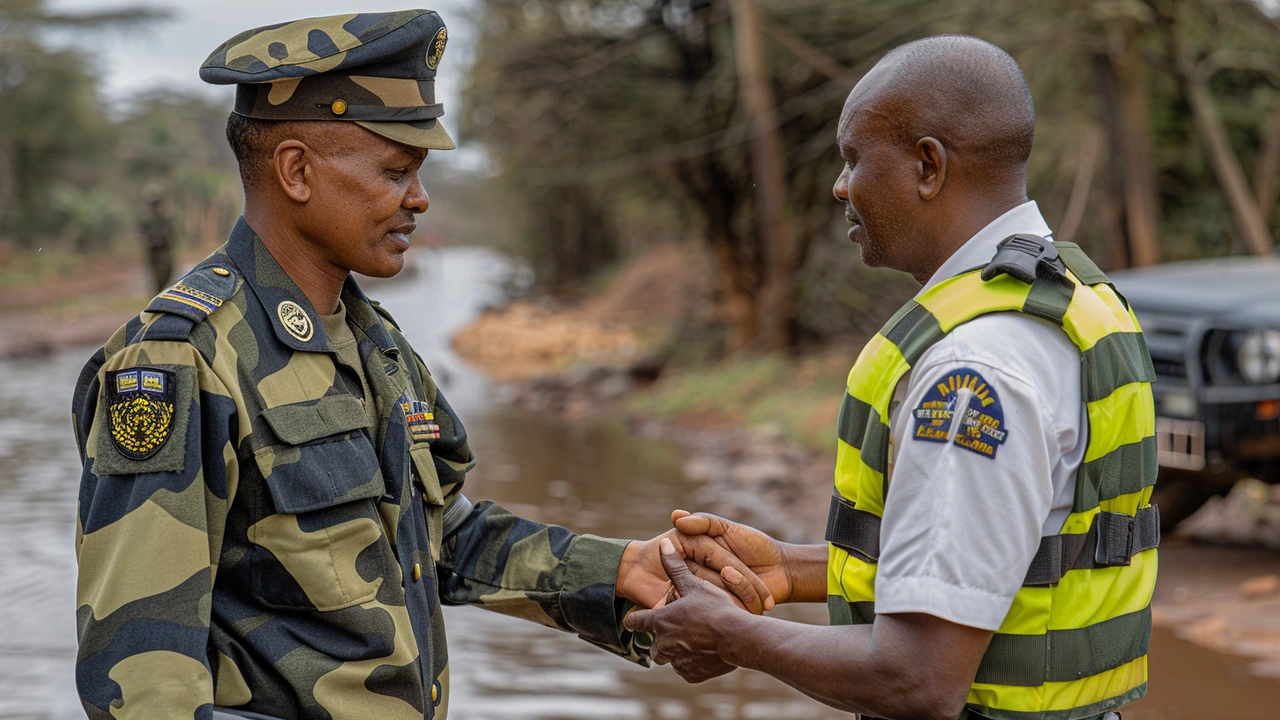KDF Chief Charles Kahariri Addresses Recovery Initiatives in Flood-Stricken Mai Mahiu
On a recent visit to the flood-affected areas of Mai Mahiu, the new Chief of Defence Forces of Kenya, General Charles Kahariri, assessed the ongoing recovery efforts. The visit, which took place on Saturday, May 4, 2024, came in the wake of a severe flood crisis that struck the region on April 29, 2024. This calamity not only claimed lives but also displaced families and wreaked havoc on crucial infrastructure. General Kahariri, alongside Major General John Nkomo, Commander of the National Floods Coordination Centre, and Susan Kihika, the Governor of Nakuru County, toured the area to observe the progress of rebuilding efforts and to discuss future prevention strategies with local authorities and community members.
Detailed reports indicated that the flooding was triggered by the blockage of a local tunnel. This obstruction led to a significant accumulation of water which eventually burst, releasing a destructive wave over Kamuchira Village and sweeping through Mai Mahiu alongside the waters of River Tongi. The rapid onset of water caught many residents unprepared, resulting in a devastating flow that submerged homes, farms, and businesses, leaving hundreds in distress and needing urgent evacuation.
During his visit, General Kahariri expressed his condolences and reaffirmed the commitment of the Kenya Defence Forces (KDF) to assist in the ongoing recovery process. 'Our hearts go out to all those affected by this tragedy,' stated Kahariri. He emphasized the need for enhanced community awareness and preparedness to mitigate similar disasters in the future. Part of the KDF’s commitment includes educational campaigns aimed at sensitizing flood-prone communities about the importance of relocating to safer grounds to avoid the catastrophic impact of such events.
Governor Susan Kihika highlighted the collaborative efforts between the county and national governments in addressing the immediate needs of displaced families. 'We are working tirelessly to ensure that all affected individuals receive the necessary support to rebuild their lives,' said Kihika. She also mentioned ongoing initiatives aimed at reconstructing damaged infrastructure, including roads and bridges, which are critical for restoring normalcy in the area.
The community’s response has been one of resilience and solidarity, with many local volunteers and organizations coming forward to aid in the relief efforts. Emergency shelters have been established, and aid distribution points are actively providing food, water, and medical assistance to those affected. Psychological support is also being offered to help residents cope with the trauma inflicted by the disaster.
Long-Term Plans and Prevention Strategies
Looking ahead, General Kahariri and local leaders discussed measures to prevent future occurrences of such devastating floods. These discussions included the potential clearing of waterways, improved weather forecasting, and early warning systems in flood-prone areas to provide residents with timely alerts. Enhanced infrastructural development, such as elevated roads and better drainage systems, were also proposed to facilitate stormwater management and reduce the likelihood of flooding.
As part of the long-term recovery plan, the government plans to engage in a comprehensive area mapping to better understand the topographical triggers of flooding. Such insights are expected to guide the construction of new infrastructures, like dams and barriers, designed specifically to manage stormwater effectively and mitigate flood risk.
The community of Mai Mahiu faces a long road to recovery, but with the continued efforts of the KDF, governmental bodies, and the resilience of the local populace, there is a collective hope and determination to overcome the challenges posed by this natural calamity and rebuild stronger and more prepared communities.















